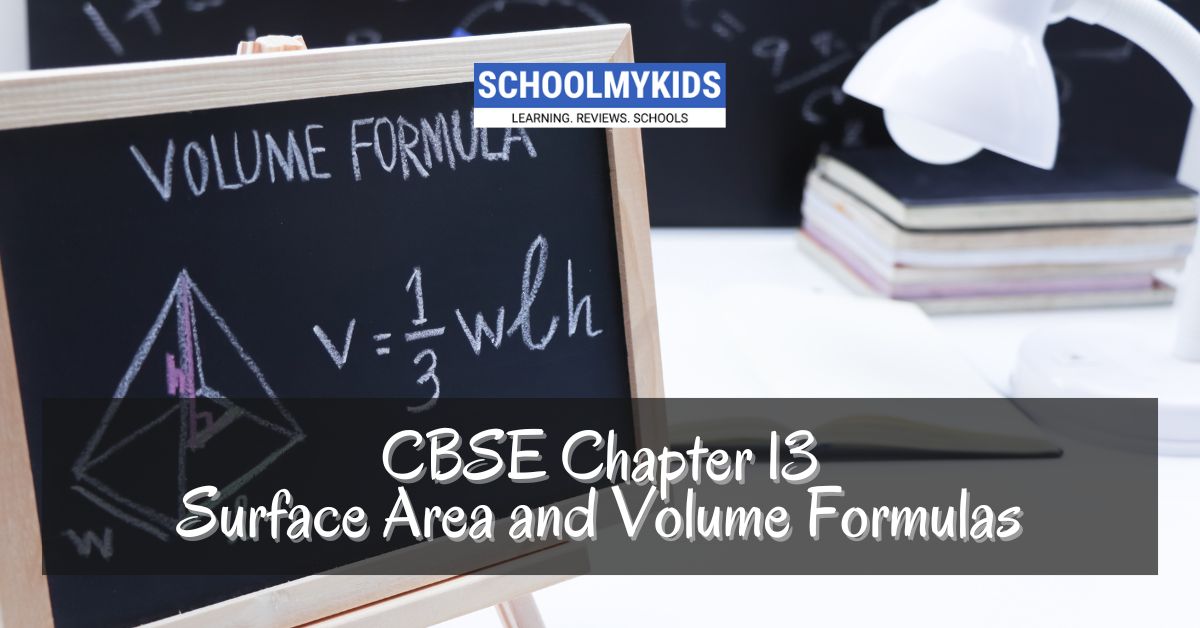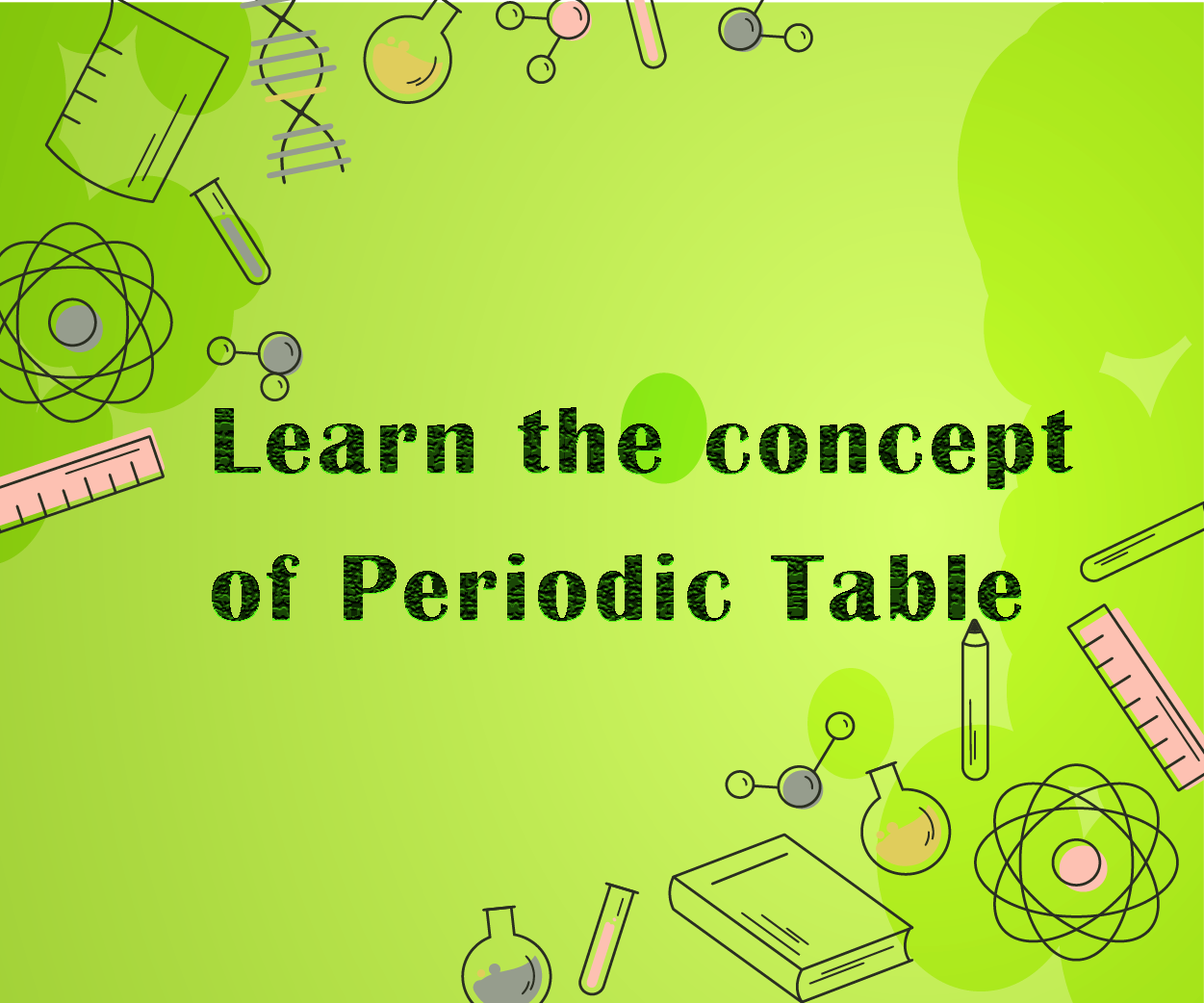This chapter dives into calculating the surface area and volume of various 3D shapes. Here are the essential formulas:
1. Cube
- Surface Area (SA): SA = 6a² (where a is the side length of the cube)
- Volume (V): V = a³
Example: A cube has a side length of 4 cm. Find its surface area and volume.
- Explanation: SA = 6 * 4² = 96 cm²; V = 4³ = 64 cm³.
2. Cuboid
- Surface Area (SA): SA = 2(lb + bh + hl) (where l, b, and h represent the length, breadth, and height of the cuboid)
- Volume (V): V = l × b × h
3. Sphere
- Surface Area (SA): SA = 4πr² (where r is the sphere’s radius)
- Volume (V): V = (4/3)πr³
4. Cone
- Surface Area (SA): SA = πr(r + l) (where r is the radius of the circular base and l is the slant height of the cone)
- Lateral Surface Area (LSA): LSA = πrl (where r and l are the same as above)
- Volume (V): V = (1/3)πr²h (where h is the height of the cone)
5. Cylinder
- Surface Area (SA): SA = 2πr(h + r) (where r is the radius of the circular base and h is the height of the cylinder)
- Lateral Surface Area (LSA): LSA = 2πrh (where r and h are the same as above)
- Volume (V): V = πr²h (where r and h are the same as above)
Advanced Topics
This section explores some additional formulas and concepts related to surface area and volume:
1. Frustum of a Cone
A frustum of a cone is the portion remaining after removing the top part by a plane parallel to the base. To calculate its surface area and volume, we need additional information like the height of the frustum or the radius of the smaller top base.
- Surface Area (SA): SA depends on the radii (r1, r2) of the top and bottom bases, the slant height (l), and whether the frustum has a top or not (open or closed). Specific formulas exist based on these factors (refer to geometry textbooks for detailed breakdowns).
- Volume (V): V = (1/3)πh(r1² + r1r2 + r2²) (where h is the frustum’s height, r1 is the larger base radius, and r2 is the smaller top base radius).
2. Sphere Caps
A sphere cap is a portion of a sphere cut by a plane. Calculating its surface area and volume depends on the height of the cap (h) and the sphere’s radius (r).
- Surface Area (SA): SA = 2πrh + πr² (where h is the cap’s height and r is the sphere’s radius).
- Volume (V): V = (1/3)πh² (3r – h) (where h is the cap’s height and r is the sphere’s radius).
3. Surface Area and Volume of Pyramids
Pyramids are 3D shapes with a polygonal base and triangular sides converging at a point (apex). Their surface area and volume depend on the base type (square, triangular, etc.) and other parameters like slant height and apothem (distance from the apex to the center of the base).
- Surface Area (SA): SA = BL + Σ(½ bh) (where B is the area of the base, L is the lateral surface area, b is the base side length of a triangular face, and h is the slant height of that face. Σ represents the sum over all triangular faces).
- Volume (V): V = (1/3)Bh (where B is the area of the base and h is the height of the pyramid).
Examples
1. Cube
A cube has a side length of 5 cm. Find its surface area and volume.
Solution:
- Surface Area (SA): SA = 6a² = 6 * (5 cm)² = 150 cm²
- Volume (V): V = a³ = (5 cm)³ = 125 cm³
2. Cone:
A cone has a base radius of 4 cm and a slant height of 6 cm. Calculate its lateral surface area and volume.
Solution:
- Lateral Surface Area (LSA): LSA = πrl = π * 4 cm * 6 cm ≈ 75.4 cm² (using calculator for π)
- Volume (V): V = (1/3)πr²h = (1/3)π * (4 cm)² * 6 cm ≈ 31.4 cm³
3. Cylinder:
A cylinder has a base radius of 3 cm and a height of 8 cm. Determine its surface area and volume.
Solution:
- Surface Area (SA): SA = 2πr(h + r) = 2π * 3 cm * (8 cm + 3 cm) ≈ 84.8 cm²
- Volume (V): V = πr²h = π * (3 cm)² * 8 cm ≈ 72.3 cm³
Advanced Surface Area and Volume Examples
1. Frustum of a Cone
Imagine a party hat shaped like a frustum of a cone. Let’s say the larger base diameter (bottom) is 10 cm, the smaller top diameter (opening) is 6 cm, and the slant height is 8 cm. We want to find the lateral surface area (LSA) and volume of this frustum.
Solution:
- Lateral Surface Area (LSA): Since we don’t have the formula readily available, we can visualize the frustum as a cone minus a smaller cone (the top part that was removed).
- Calculate the slant height (l₁ = 8 cm) of the original cone using the diameter information (radius r₁ = diameter/2 = 5 cm) and the Pythagorean theorem: l₁² = r₁² + h₁² (where h₁ is the height of the original cone, which we don’t have but don’t need for LSA).
- Similarly, calculate the slant height (l₂ = ?) of the smaller top cone using its diameter (radius r₂ = diameter/2 = 3 cm).
- LSA of the frustum = LSA of the original cone – LSA of the smaller top cone: LSA = πr₁l₁ – πr₂l₂. Substitute the known values and solve for LSA.
- Volume (V): We can use the formula V = (1/3)πh(r1² + r1r2 + r2²) directly. Here, h is the height of the frustum (which we might need to measure from the party hat), r₁ is 5 cm (larger base radius), and r₂ is 3 cm (smaller top base radius). Substitute these values and solve for the volume.
2. Sphere Cap
Imagine a spherical fruit with a small portion cut off at the top, leaving a spherical cap. The sphere’s radius is 5 cm, and the cap’s height (h) is measured to be 2 cm. We want to find the surface area and volume of this cap.
Solution:
- Surface Area (SA): SA = 2πrh + πr² (where h = 2 cm and r = 5 cm). Substitute the values and solve for SA.
- This formula considers the curved surface area of the cap (2πrh) and the circular top surface area (πr²).
- Volume (V): V = (1/3)πh² (3r – h) (where h = 2 cm and r = 5 cm). Substitute the values and solve for the volume.
- This formula takes into account the spherical cap’s shape and height.
3. Square Pyramid
Consider a square pyramid with a side length of 6 cm at the base and a slant height of 8 cm for each triangular face. We want to find the total surface area and volume of this pyramid.
Solution:
- Surface Area (SA):
- First, calculate the area of the square base (B = side² = 6 cm × 6 cm = 36 cm²).
- We need to find the area (½ bh) of each triangular face. Since all four faces are identical triangles, we can calculate the area of one and multiply by 4 for the total lateral surface area.
- To find the area of a triangle, we would need its base length (b) and the corresponding height (h) from the apex (which might require additional measurements or calculations based on the pyramid’s properties).
- Once you have the areas of the base and each triangular face, substitute them into the formula SA = BL + Σ(½ bh) to find the total surface area.
- Volume (V): V = (1/3)Bh (where B = 36 cm² from the previous step and h is the height of the pyramid, which might require measurement). Substitute the values and solve for the volume.
Surface Area & Volume Questions
- A cuboid has a length of 8 cm, a breadth of 5 cm, and a height of 3 cm. Calculate its surface area and volume. (Explain how you used the formula to arrive at the answers.)
- A cuboid has a square base with a side of 6 cm. If the total surface area is 156 cm², find the height of the cuboid. (Set up an equation and explain how you solved for the height.)
- A sphere has a radius of 7 cm. Find its surface area and volume (use 4/3π for pie). (Introduce the formula for sphere and explain each variable.)
- Compare the surface areas of two cubes with side lengths of 4 cm and 6 cm. How much larger is the surface area of the bigger cube? (Calculate the surface areas of both cubes and find the difference.)
- A cylindrical pencil has a radius of 0.5 cm and a height of 7 cm. Calculate the curved surface area of the pencil (excluding the top and bottom). (Introduce the formula for curved surface area of a cylinder and explain each variable.)









Be the first one to comment on this story.